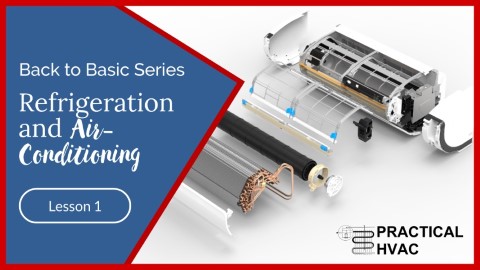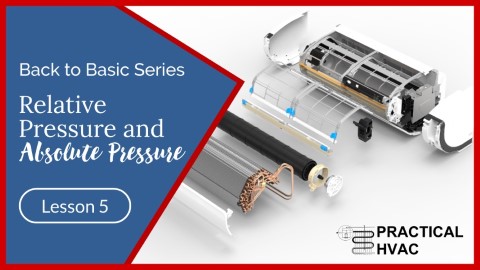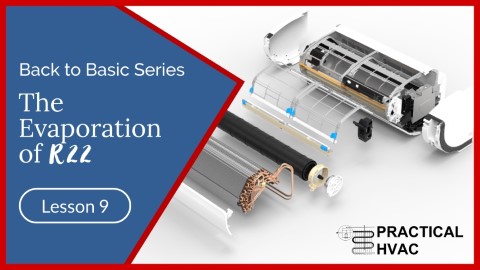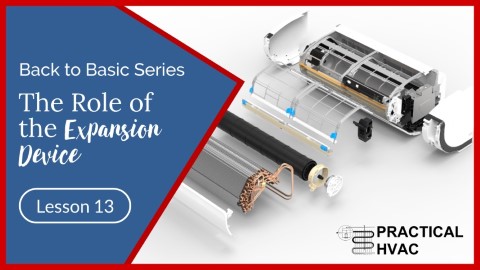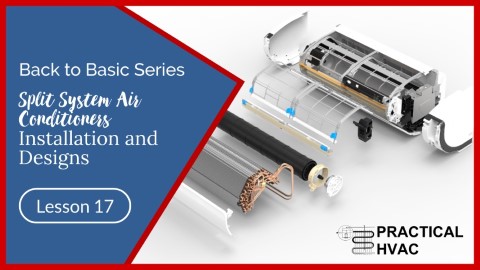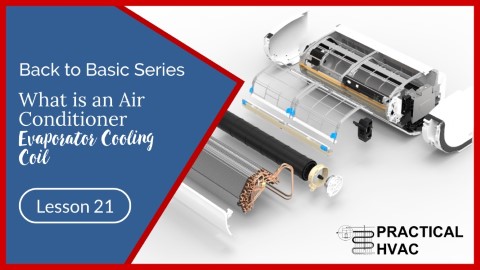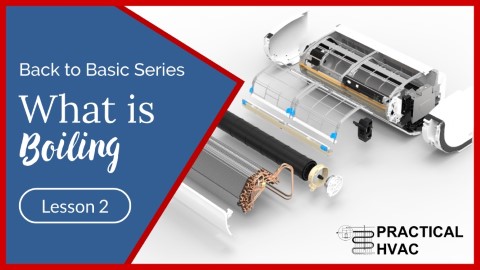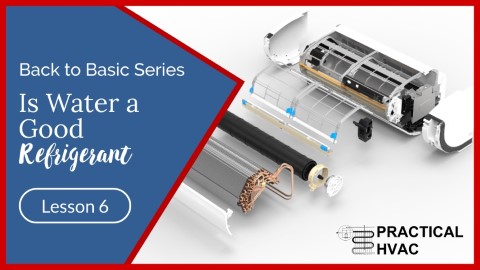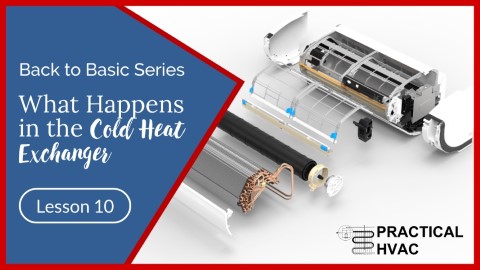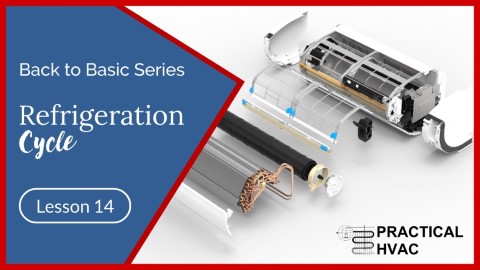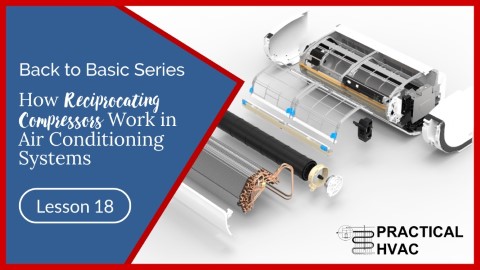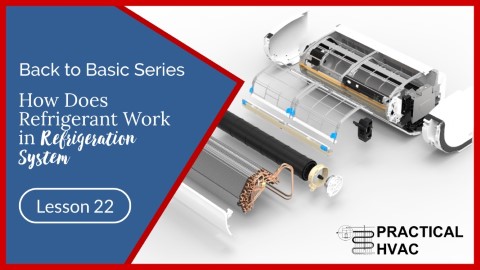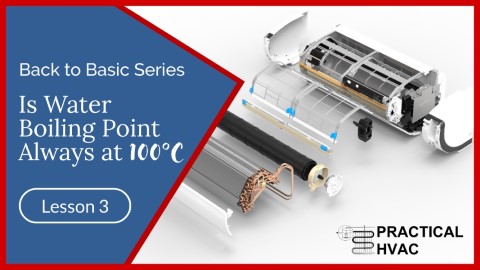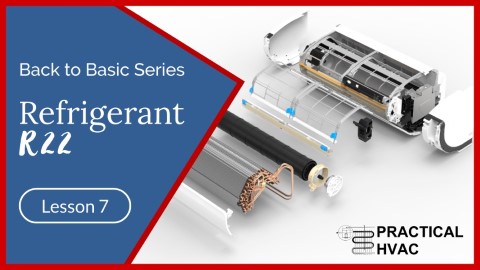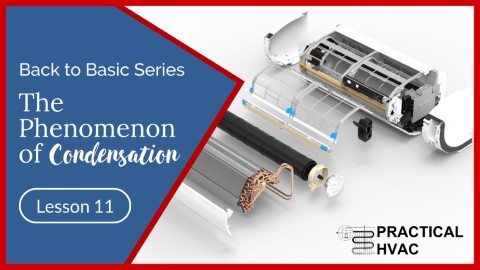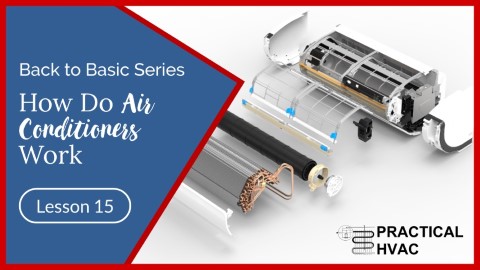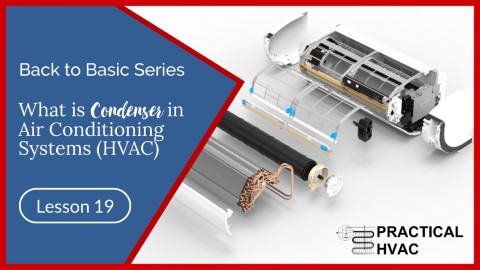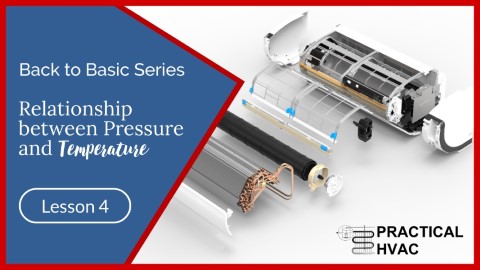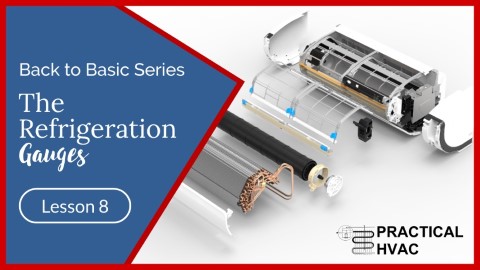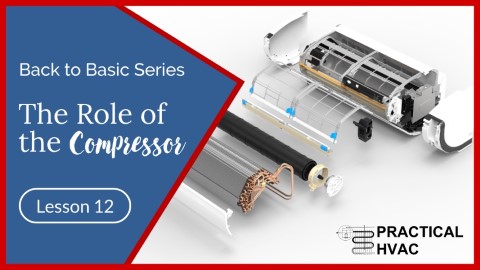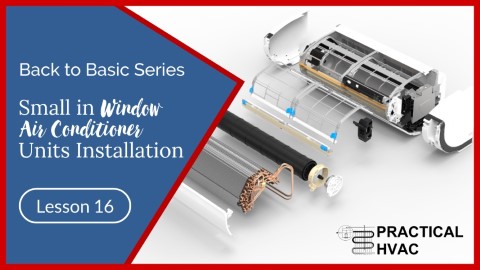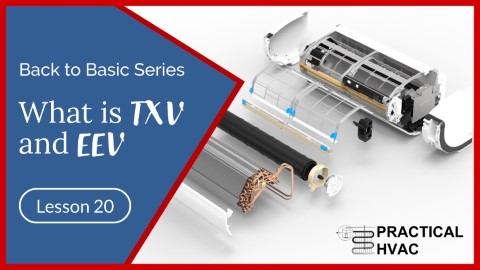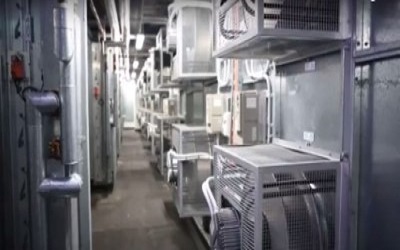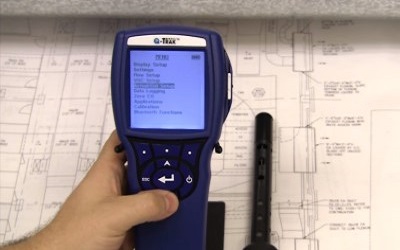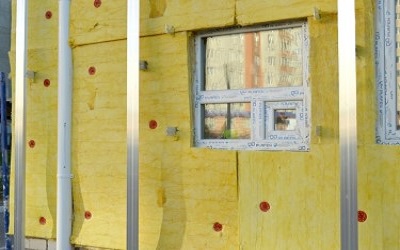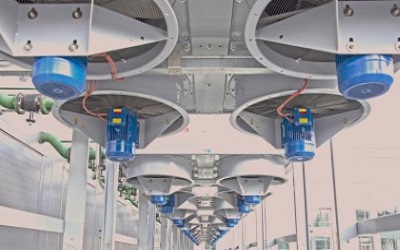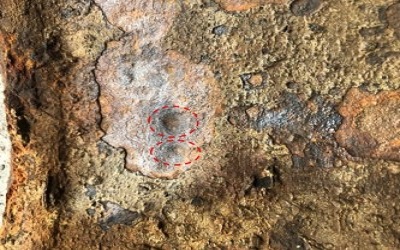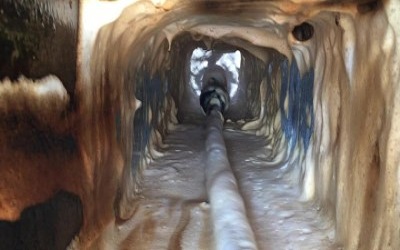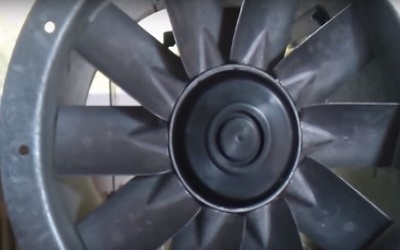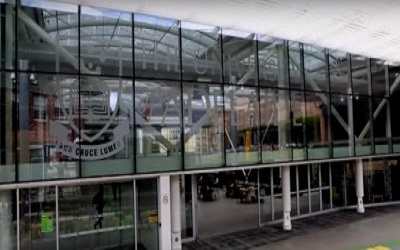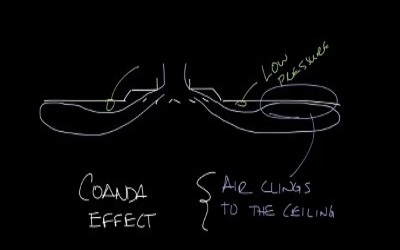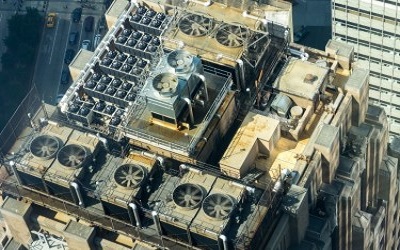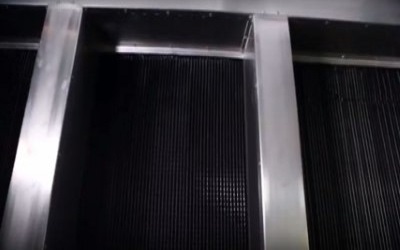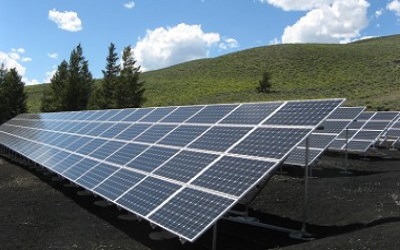Refrigeration Cycle
Refrigeration Cycle
The Evaporator
As its name indicates, it’s in the evaporator that the refrigerant evaporates, changes from the liquid state to the vapour state and absorbs heat as it does so. So, as a result, it causes the food placed in the fridge to be chilled.
To simplify our explanations, we’ll represent the evaporator using the figure opposite.
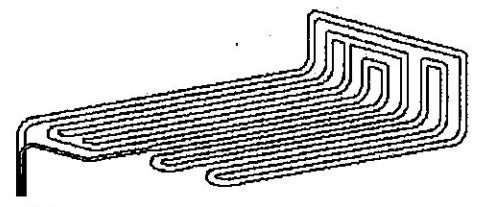
In the diagram, we can observe the inlet (1) and outlet (2) of the evaporator. The refrigerant flows in the refrigerant tube (3). The thin metal fins (4) improve the heat exchange between the fluid flowing in the pipe and the air that passes over the evaporator.
So, what do the fins do?
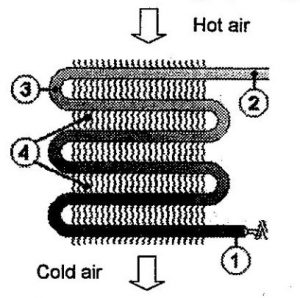
If you examine the radiator and the light bulb opposite, they should give you an idea.
The light bulb’s filament at 2000°C won’t heat a room, but a radiator at 60°C will heat it adequately, simply because its exchange surface in contact with the air around it is so much larger!
So, the larger the heat exchange surface available, the more efficient the heat exchanger is. The fins allow improved heat exchange as they increase the exchange surface area. Their role is vitally important and they should always be kept clean and in good condition.
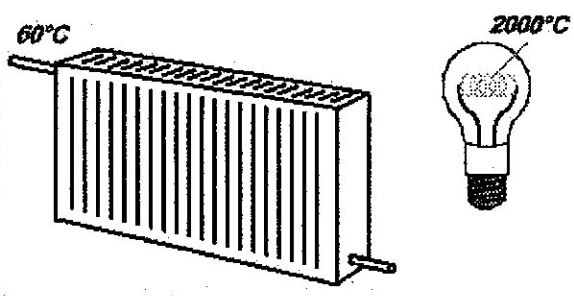
So, now do you understand the role of the fins?
The Compressor
At the evaporator outlet, the refrigerant is in the vapour state at low pressure (LP), and the compressor draws in the refrigerant and compresses it to high pressure (HP). The effect of this compression is to simultaneously increase the temperature and pressure of the vapour discharged towards the condenser.
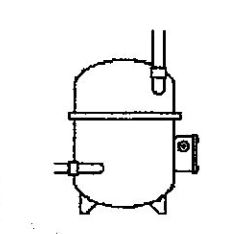
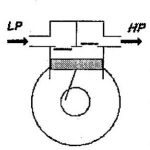
The refrigerant enters the compressor at LP as a “cold” vapour and emerges as a “hot” vapour.
To clarify our explanations, we’ll represent the compressor using the LP and HP diagram.
The Condenser
The refrigerant emerging from the compressor is much hotter than the ambient temperature.
It is cooled in the condenser and passes from the gaseous state to the liquid state, giving out heat as it does so.
Heat transfer always occurs from the hotter body to the colder, from the refrigerant to the ambient.
The condenser’s role is to facilitate this thermal exchange.
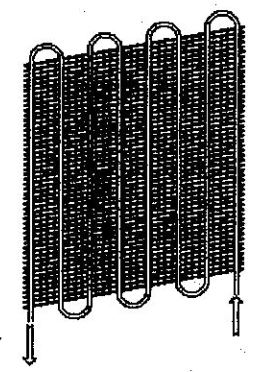
To simplify our diagrams and to make explanations easier, we’ll represent the condenser as shown.
We observe the inlet (1) and outlet (2) of the condenser. The refrigerant flows through the refrigerant tubing (3) whilst changing from the gaseous state to the liquid state. The fins (4) facilitate the thermal exchange between the refrigerant and the air, exactly as in the evaporator.
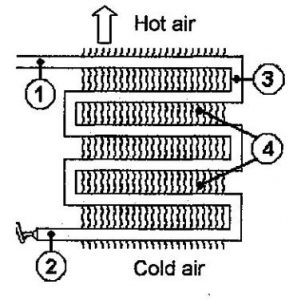
The only differences between the diagram for the condenser and the evaporator are the ends of the tubing. So, to avoid confusion, we draw the condenser with rectangular ends and the evaporator with circular ends.
The Expansion Device
The expansion device connects the condenser outlet to the evaporator inlet. It expands the “hot” liquid at high pressure to become a “cold” liquid at low pressure.
Despite its small size, it is one of four essential elements of the compression refrigeration cycle.
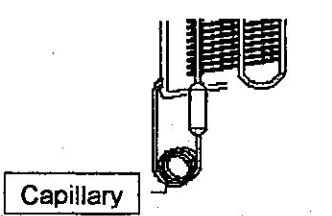
To simplify our diagrams and to make explanations easier, we will use the symbol for the expansion device shown.

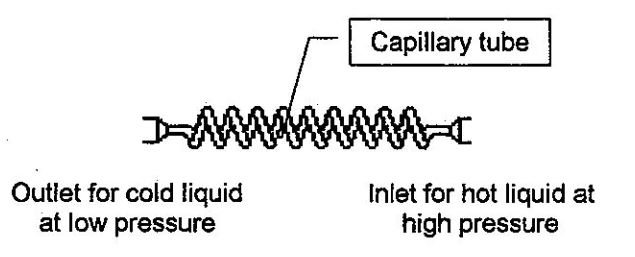
The capillary expansion device consisted of a single long thin copper tube. Refrigerant may flow through it in both directions but it has a fixed internal diameter and length. Otherwise, the quantity of the refrigerant entering the evaporator will be incorrect.
The expansion device, the evaporator, the compressor and the condenser are the four indispensable elements of a refrigerant circuit. The system will only work if any of these four components is defective. Therefore, we must thoroughly understand the role, the operation and the graphical representations of each of these items.
Summary of the Refrigeration Cycle
The R22 emerging from the capillary enters the evaporator in the liquid state and at low pressure (LP). Therefore, its temperature is much lower than that inside the fridge.
When two bodies are at different temperatures, heat always flows from the hotter body to the colder one. There is, therefore, a transfer of heat between the foodstuffs and the R22.
The R22 absorbs heat from the food, and this heat causes it to vaporise (this is the latent heat of evaporation). It is why the R22 evaporates and simultaneously cools the refrigerator’s interior.
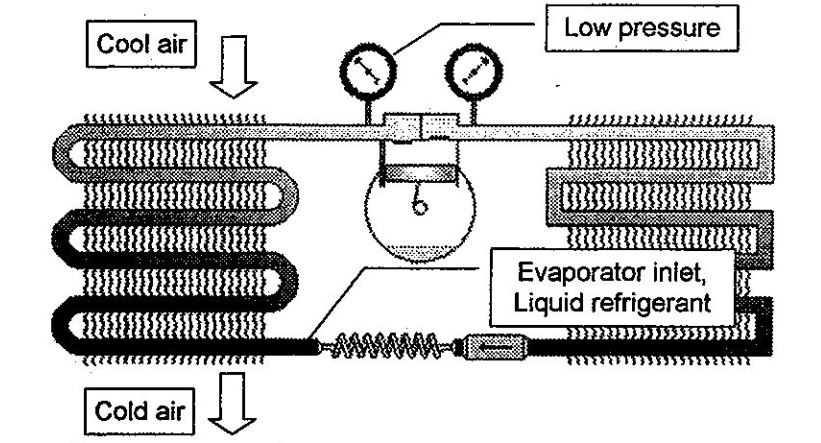
The compressor draws the R22 in the vapour state from the evaporator outlet at low pressure. Compression then simultaneously increases the pressure and the temperature of the vapour.
The R22 vapour enters the condenser at high pressure (HP) and high temperature. As a result, heat flows from the hotter body to the cooler body. As a result, the R22 gives up its heat to the air in the kitchen.
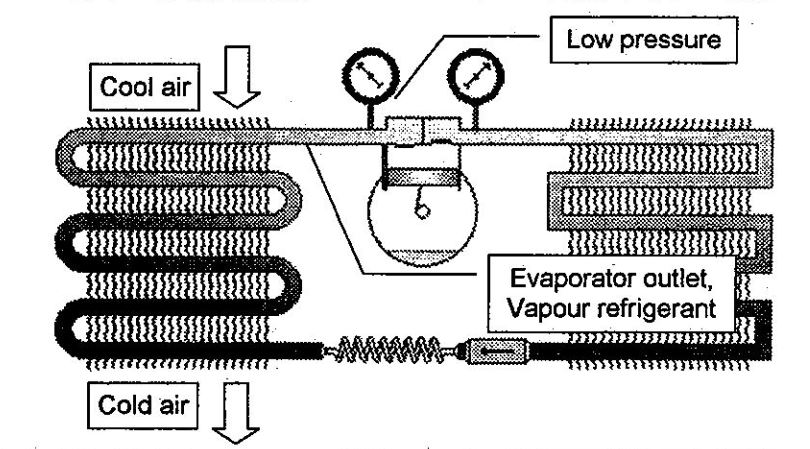
As the R22 loses heat, it condenses (and gives up the latent heat of condensation).
The R22 is in the liquid state at high pressure at the condenser outlet. It then passes through the capillary and is expanded to low pressure and low temperature: We’ve now come back to our starting point.
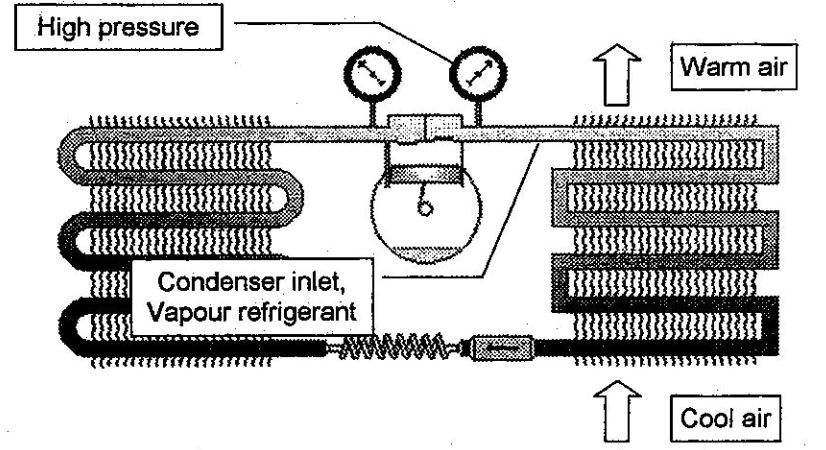
Each time it completes this circuit, the R22 passes through the same point, in the same physical state, with the same properties. There is no refrigerant consumption or losses unless leaks exist.
It is why some refrigerators can operate for more than thirty years without any refrigeration system maintenance.
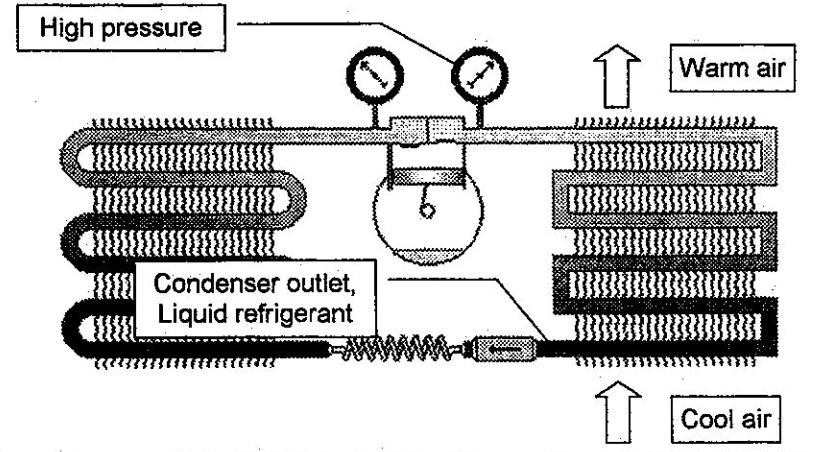
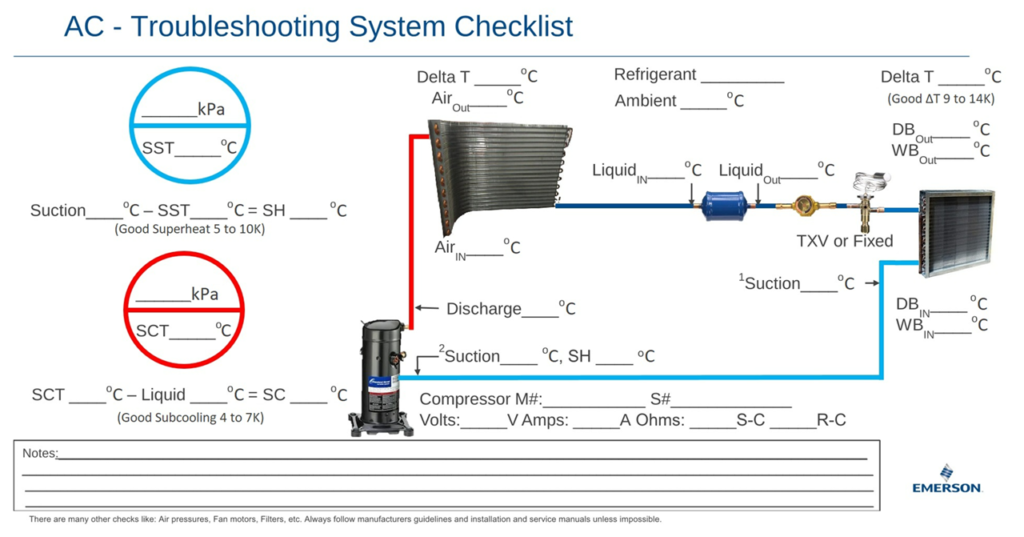
Back to Basic!
Related
Read more: Fan wall
Read more: How to verify the percentage of outside air in an enclosure
Read more: BCA Part J5 Air-conditioning system control
Read more: Microbial Induced Corrosion (MIC) in Pipes
Read more: Is your kitchen exhaust system a fire hazard
Read more: What is coanda effect
